How To Take Night Sky Photos
I’ve always been captivated by magical photos of the milky way, and of the northern lights, but was intimidated by learning how to actually take them myself.
Since I moved here to the Keweenaw Peninsula, learning how to take photos of the night sky has been a top priority for me, though. Because there’s very little light pollution here, which makes for a very dark sky at night. It’s absolutely incredible!
So I’ve been learning and practicing, and although I’m not an expert (yet), I’d like to share what I’ve learned with you. There’s something truly magical about being able to capture the beauty of the stars and night sky above us.
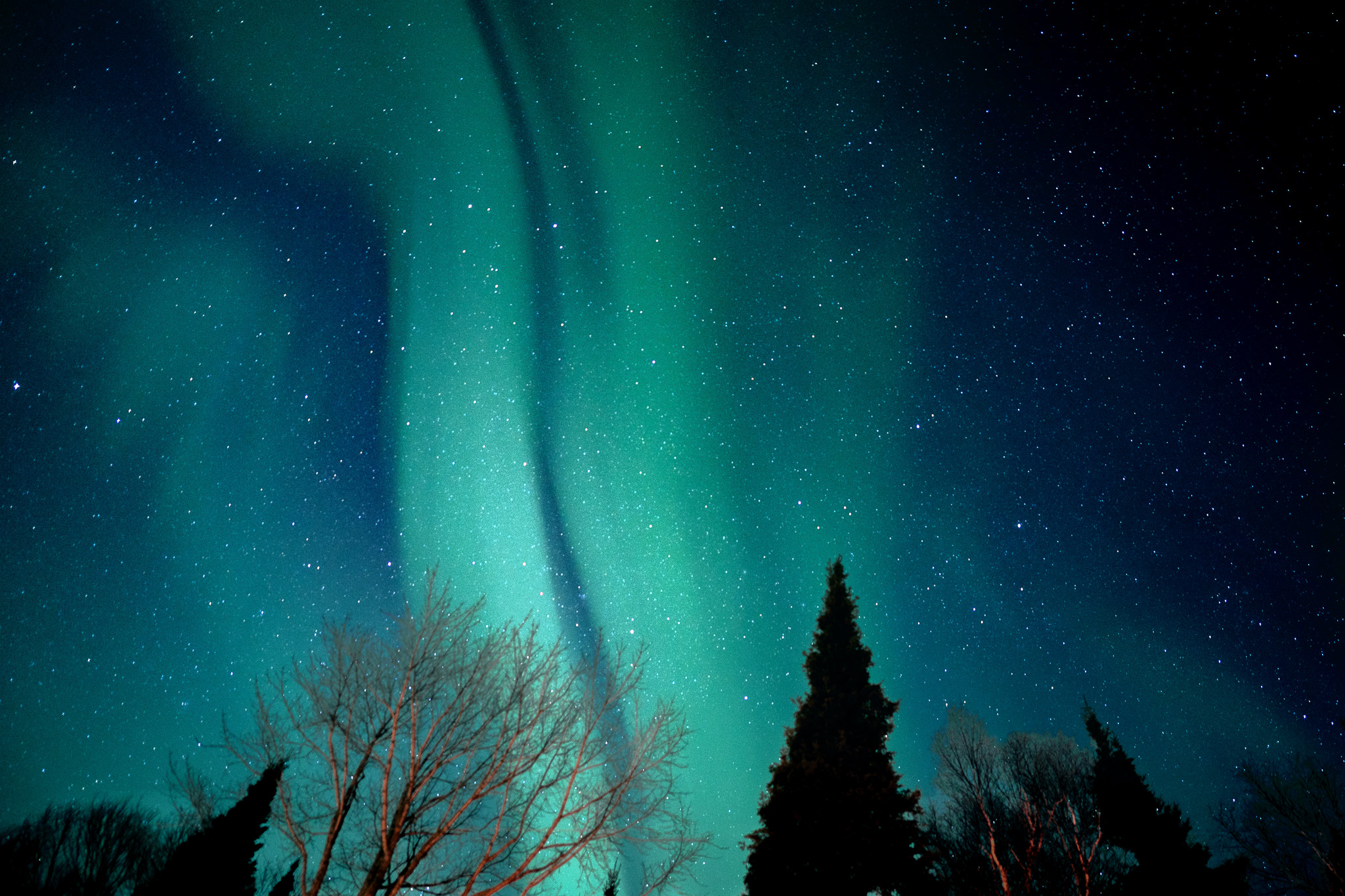
Here are some tips I’d like to share on how to get started with astrophotography and capturing the night sky in all its luminescent glory!
Start with the right gear
Fortunately, you don’t need to invest in a ton of expensive gear to begin. These are the recommended items to start shooting stunning images of the night sky:
- A camera with manual mode for controlling the ISO, aperture, and shutter speed. (Full-frame cameras are better as they can capture more light and have lower noise at higher ISO settings.) I’m currently using a Sony a7iii mirrorless camera.
- A sturdy tripod for shooting long exposures in windy conditions. A ball-head mount on your tripod is much easier to use! (In a pinch, I’ve used my Gorilla Pod to stabilize my camera or even propped it up with something sturdy on the ground or on my car!)
- Choose a wide-angle lens with a wide aperture (f/2.8 or lower) if you want to capture the Milky Way or aurora borealis. 14-24mm is best.
- A self-timer or remote shutter-release to help minimize any potential camera shake and enable you to shoot long exposures without camera shake or motion blur.
My other recommendation is to bring a flashlight or headlamp with RED light to help you see as you move around in the dark. Why red? It takes about 20-30 minutes for your eyes to fully adapt to the dark when doing photography at night. When light from a flashlight or headlights appears, your eyes have to start the process all over again. Red light doesn’t mess with that process. :)
Plan your photos ahead of time
When it comes to astrophotography, timing is key. Plan ahead of time to make sure you’re shooting when the sky is darkest, either during a new moon or when the moon isn’t full and bright.
Learn all you need to know about the night sky with the help of apps and other resources. You can plan for the moonrise time according to your location, and be aware of when the Milky Way will rise overhead and its direction.
For an updated list of helpful apps for astrophotography, check out this web page. And I use the app My Aurora Forecast to get alerts when there’s a possibility of seeing the northern lights, as well as relying on word of mouth from local Aurora chaser groups on Facebook.
During winter in the Northern Hemisphere, night lasts longer and is darker, making it easier and more convenient for night sky photography. And you’ll get cleaner images in colder weather. That’s because your camera’s sensor won’t heat up as much during longer exposures and won’t generate as much noise.
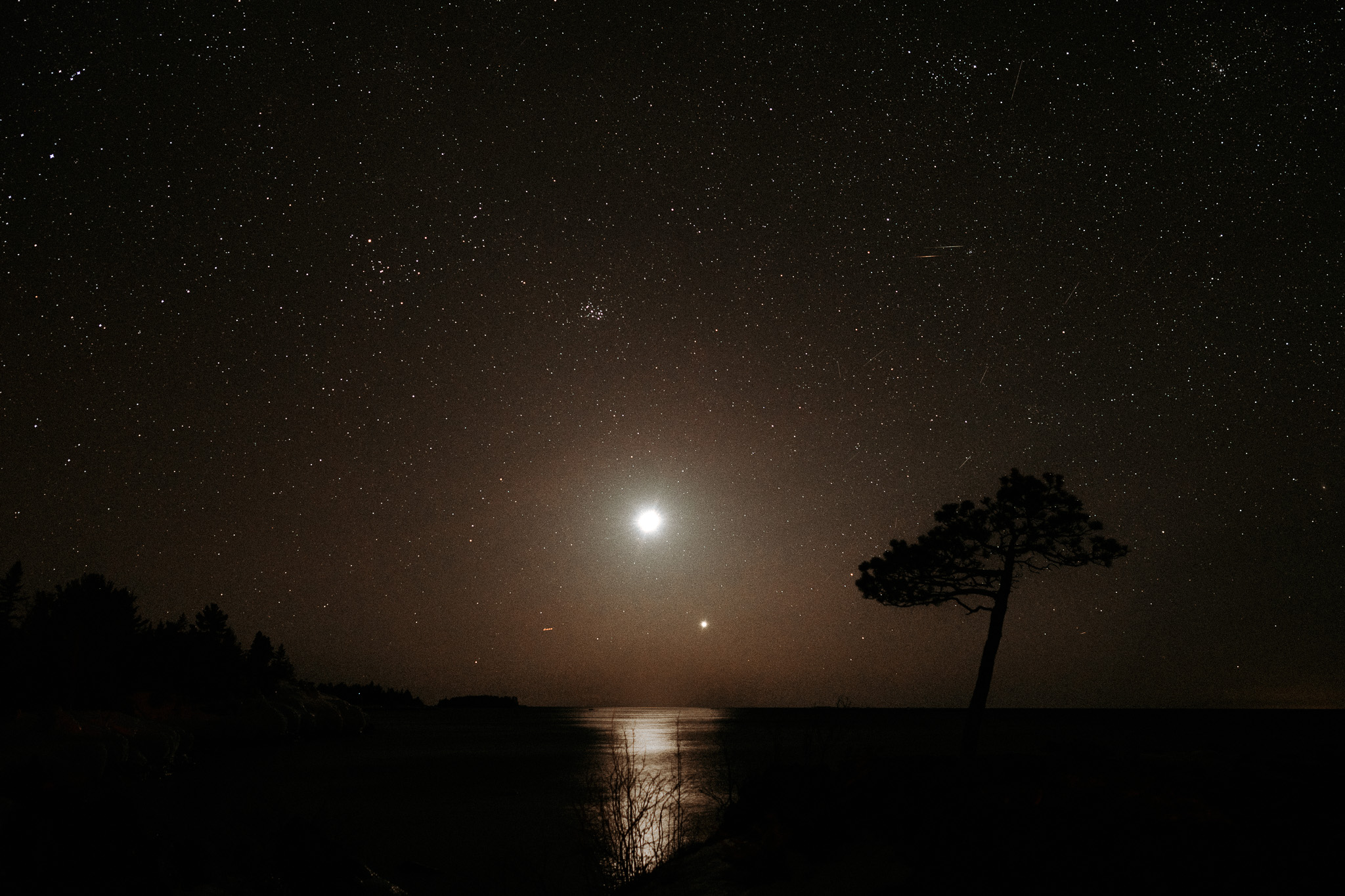
Set up your camera
I recommend getting your camera set up before you leave your house! This saves fumbling around in the dark. I recommend:
- Manual (M) mode.
- Auto white balance.
- RAW.
- 5-second self-timer (to avoid camera movement at the time of shutter release).
- Turn off any in-camera noise reduction (an amount of time equal to the exposure time will be taken by the camera for this process which means you will have to wait double between each shot. That can be a long time! Besides, you can reduce noise when post-processing.)
- Disable any in-camera image stabilization.
- Set your lens to its widest aperture (f1.2, f1.4, f1.8, etc).
- Turn your screen brightness all the way down.
- Have the setting to switch between auto spot focus or manual focus handy.
- Start with your ISO set to 800.
- Use the 500 rule to set your starting shutter speed.
What is the 500 rule? Divide 500 by the focal length of your lens. For example, if you’re using a 24mm lens, it means you should be able to use a shutter speed of 20-21 seconds (500/24).
You’re probably going to need to adjust your shutter speed and/or ISO a bit to get the right exposure, but this is a good starting point.
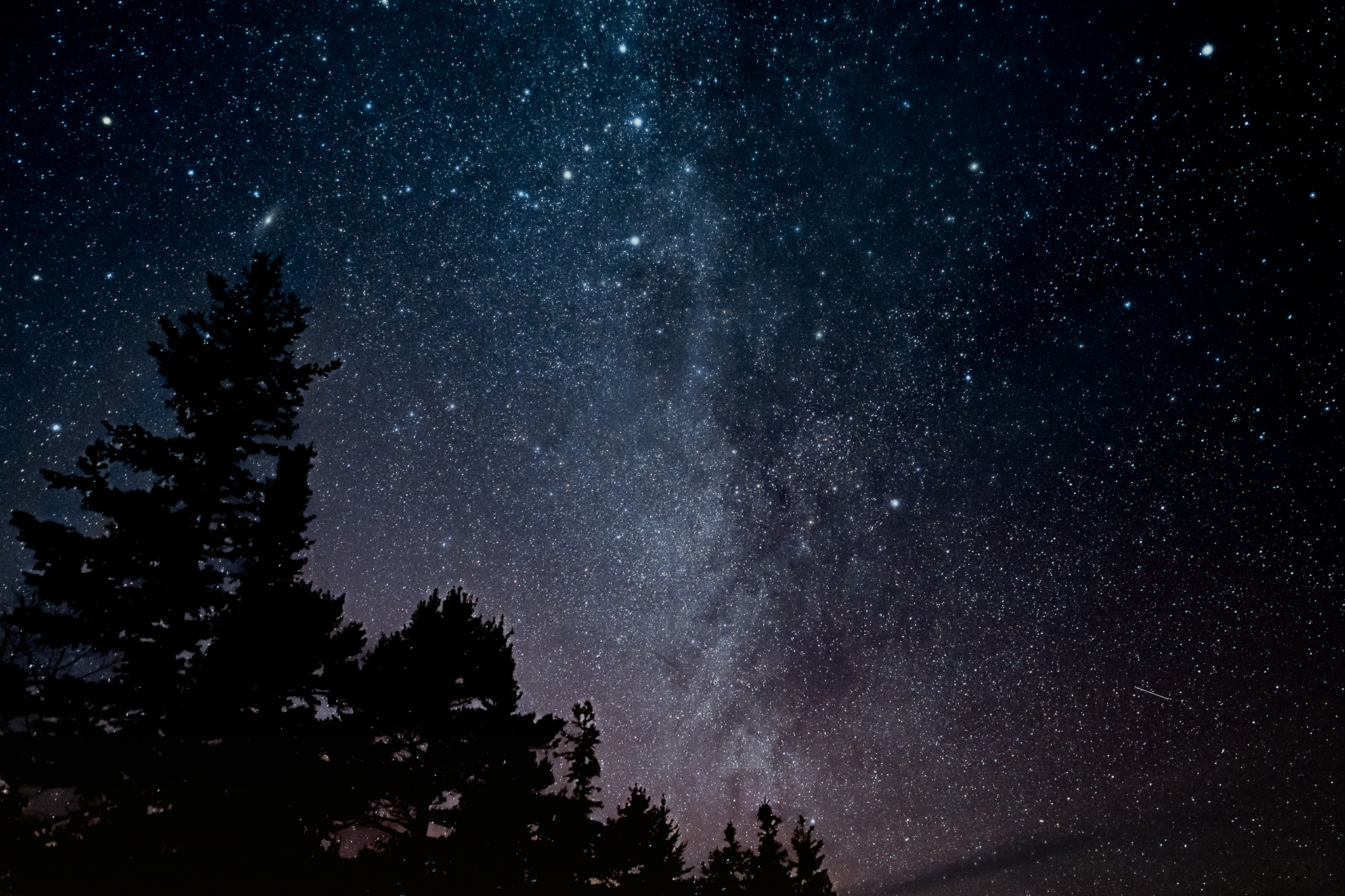
Find a suitable location
When picking a location for astrophotography, light pollution is an important factor to take into consideration. Try to get away from direct light sources such as street lamps or car headlights, and consider higher elevations where there are fewer particles in the air that can scatter light. This should help you get clearer and more detailed images.
It’s a good idea to scout your location in the daytime and visualize the compositions you want. Consider including interesting elements of the landscape in the foreground – this will help to tell a story and give your images a sense of place.
Photographing the Milky Way
Capturing the beauty of the Milky Way is thrilling (and can be addictive). You’ll find that most of the same concepts apply to both Milky Way photography and other night sky photos; however, it’s important to take note of when and where you plan to shoot for optimum results.
For photographing the Milky Way you need a clear night, a dark sky location, and the visible part of the Milky Way in the sky. The apps I mentioned above can help.
- Start with the camera settings I listed above under “Setup your camera“.
- Stabilize your camera on a tripod or other.
- Frame your shot.
- Focus on a bright star or use manual focus. Be sure to zoom in if possible and double-check this- I am guilty of not doing so and was disappointed my photos were blurry!
- Take a test photo.
- Use your histogram to check your exposure if possible.
- If your photo is too bright, try reducing the ISO or shutter speed.
- If your photo is too dark, try increasing your shutter speed. I wouldn’t change the ISO unless your shutter speed gets to be too long, because this will bring in additional noise and reduce clarity.
- Keep adjusting your settings until you’re happy with the results!
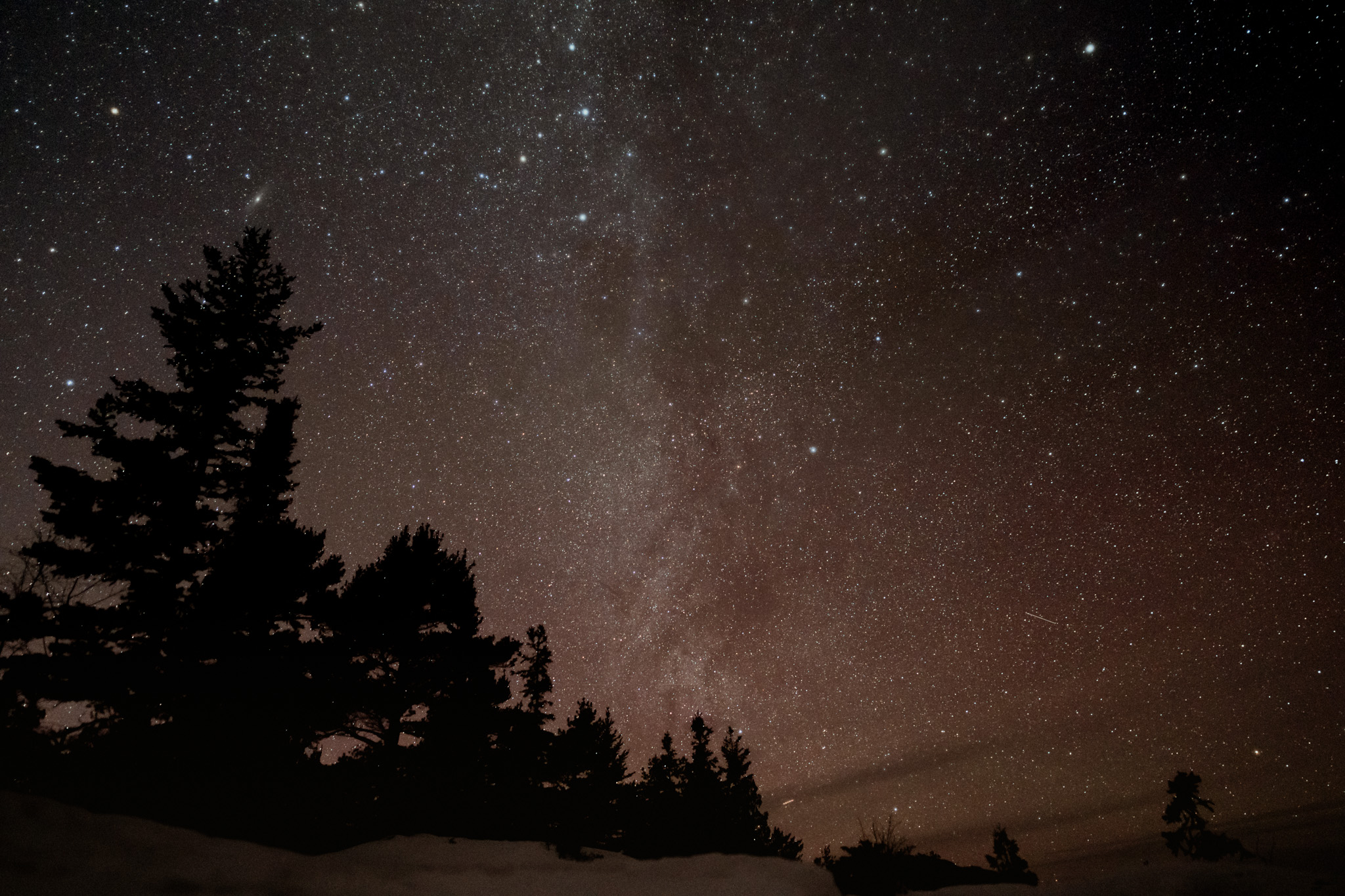
Photographing the northern lights
Photographing the Northern Lights is a bucket list item for many photographers! Since the lights are often most active in winter and around midnight, be prepared. When the lights appear, take lots of shots and adjust settings as needed.
Cameras are capable of capturing the northern lights even when it’s difficult for us to them with the naked eye. The camera will record colors and light more vividly and sometimes the results are surprising!
- Start with the camera settings I listed above under “Setup your camera“.
- Stabilize your camera on a tripod or other.
- Frame your shot.
- Focus on a bright star in the sky or use manual focus. Be sure to zoom in if possible and double-check this- I am guilty of not doing so and was disappointed my photos were blurry!
- Take a test photo.
- Use your histogram to check your exposure if possible.
- If your photo is too bright, try reducing the ISO or shutter speed.
- If your photo is too dark, try increasing your shutter speed. I wouldn’t change the ISO unless your shutter speed gets to be too long, because this will bring in additional noise and reduce clarity.
- Keep adjusting your settings until you’re happy with the results!
- Don’t delete images on the spot, as photos that looked boring on the camera screen may actually have captured the lights beautifully.

Photographing the moon
The best time to shoot is when the moon is at its highest point in the sky – this will help you get extra-sharp detail. Location is also key; make sure you choose a spot away from ambient light sources like streetlights and traffic. The settings for photographing the moon are different than photographing the dark night sky because the moon is very bright in comparison.
- Select an aperture of f/11 or f/16.
- Use a shutter speed of at least 1/15 second or faster since the moon actually moves pretty quickly across the sky.
- Set the focus to infinity or manually focus on the moon.
- Use Spot metering or Highlight Priority metering to help you get the correct exposure for the moon, which will be the brightest part of your image.
- Set the camera’s exposure manually and underexpose the image to ensure the detail on the moon’s surface. I use the camera’s histogram to make sure my highlights aren’t clipped.
- If you’re unsure, try taking multiple photos at different exposures (like exposure bracketing) to make sure you nail it.

Tips for using your phone to photograph the night sky
Sometimes the best camera is the one we have on us. In other words, sometimes your phone camera is better than no camera at all! Using your phone to photograph the night sky can be tricky because phone cameras don’t have the same capabilities as dedicated camera systems. Especially when it comes to low light. But there are some tricks to getting better shots of the night sky with your phone.
- Make sure you’re in a VERY dark location. The darker the better!
- Immobilize your phone using a tripod or other device that keeps it from moving. At all.
- If your phone has a Night Mode, it can only do so much, and sometimes that isn’t good enough. Like with my camera. But you can try an app like Slow Shutter Cam or Average Camera Pro for IOS. For Android, Camera FV-5 Lite or Manual Camera DSLR.
- Turn off your flash and HDR mode.
- Set the timer to get sharper images.
- Don’t use digital zoom.
- Use your app to set infinity focus, high ISO (try starting with 1000), widest aperture (f/1.2 – f/5.6), and exposure of 1 second or greater (try starting with 8 seconds).
Don’t forget to stop and soak it in!
Don’t forget to stop taking pictures and take some time to be present in the moment! Isn’t the universe amazing???
“If I like a moment, for me, personally, I don’t like to have the distraction of the camera. I just want to stay in it.” -Sean O’Connell, The Secret Life of Walter Mitty
Editing tips for astrophotography
Editing photos of the night sky is really exciting for me! I love seeing my photos pop and their beauty enhanced. I use Adobe Lightroom Classic for editing. If I need to make more difficult adjustments or changes, I use Photoshop.
First, import your RAW files into editing software like Lightroom or Photoshop. Adjust the white balance to get accurate colors; for night shots, a cooler temperature often looks more natural.
Next, adjust the exposure. Skies are often brighter than the foreground, so you may need to dodge and burn to balance the exposure. Use adjustment brushes or gradients to darken the sky and brighten the landscape.
Adjust clarity and contrast to make stars and celestial objects pop. Adding clarity will make stars sharper, but be careful not to overdo it. Lower contrast can help reduce noise in the shadows.
Finally, do any spot removal or further adjustments. Convert to black and white or adjust colors for effect. Your stunning night sky photos are ready to share!
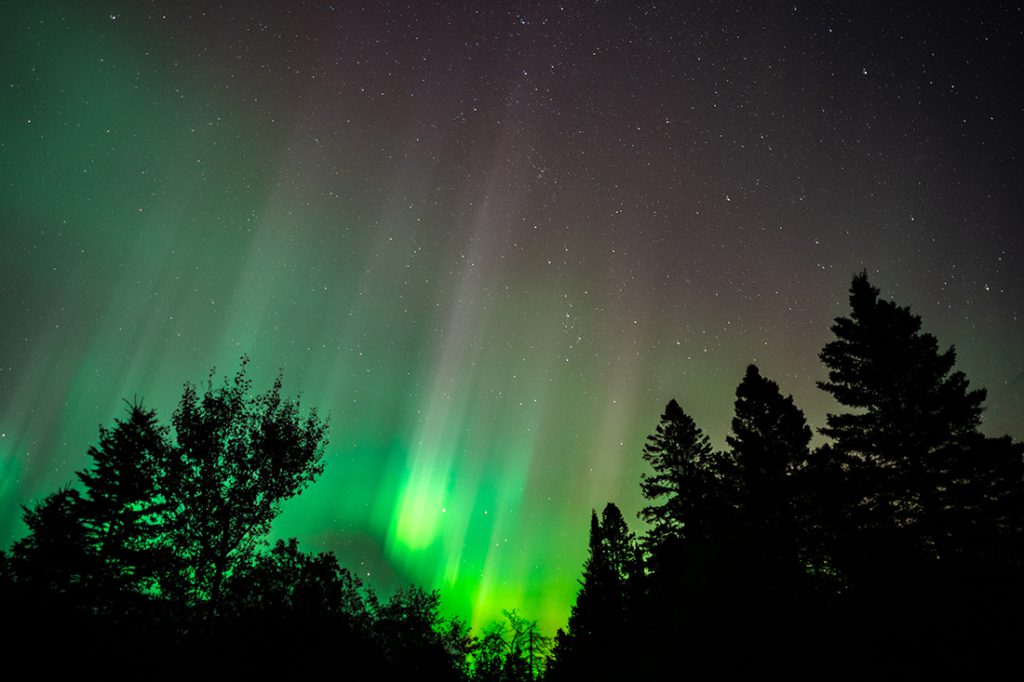
While astrophotography does require some patience and planning, the reward of capturing the night sky’s dazzling wonders makes it worth the effort. Getting out under the stars, away from the bustle of everyday life, is a chance to appreciate the beauty and mystery of the night. Sharing the beauty of the night sky through your photographs is a gift to others that can inspire wonder and nurture our connection to something greater than ourselves.
I’m Andrea.
I’ve been walking this path as a wedding & elopement photographer for over a decade. Learning. Unlearning. Making mistakes. Finding my rhythm. Building a business that feels true to who I am. I offer mentoring for photographers who are craving more alignment, more soul in their work, and more clarity in how they show up.
This work isn’t just about the technical. It’s about energy, presence, and holding space—for others and for yourself.

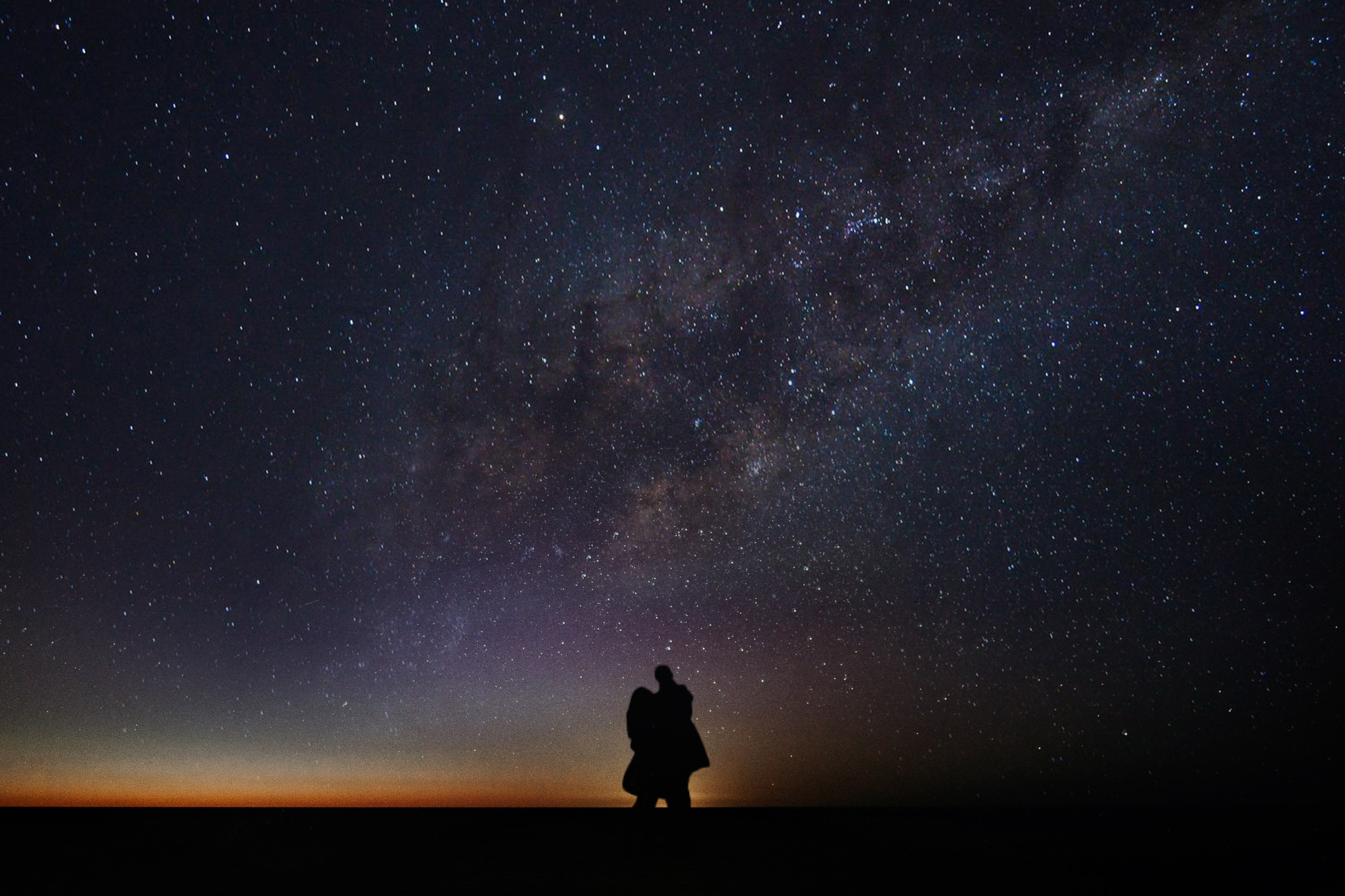

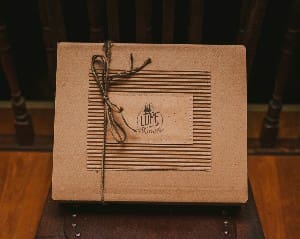
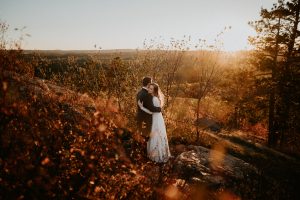
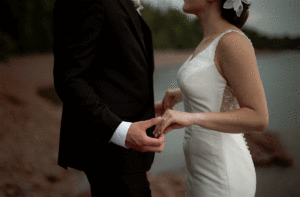
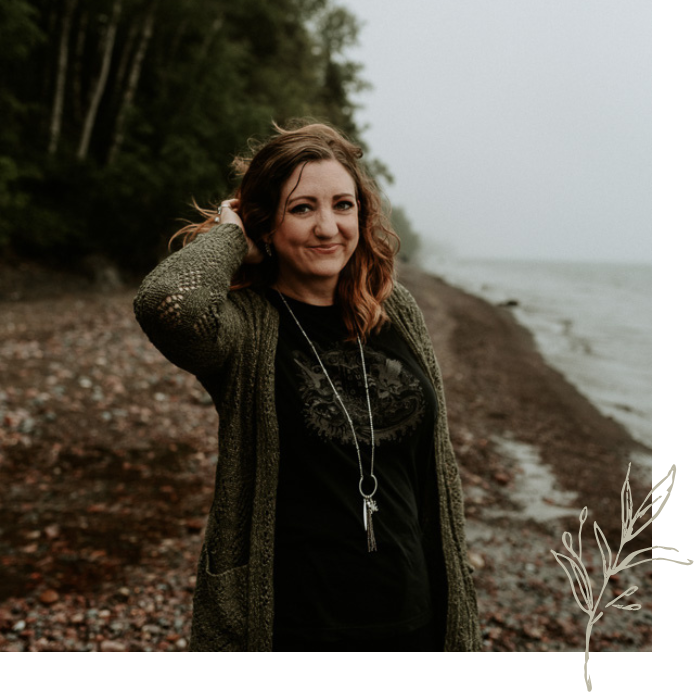
Andrea. Excellent guide for night photography.
Thank you so much! I’m glad to be able to help. :)